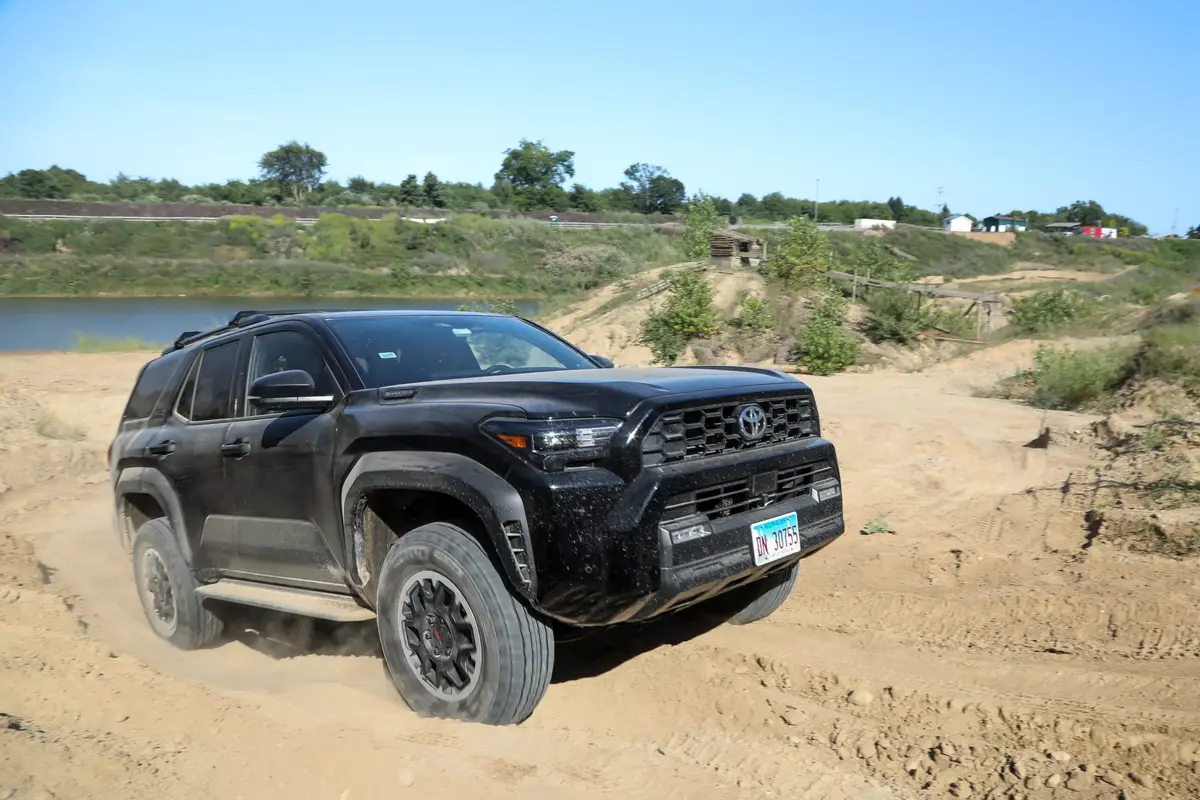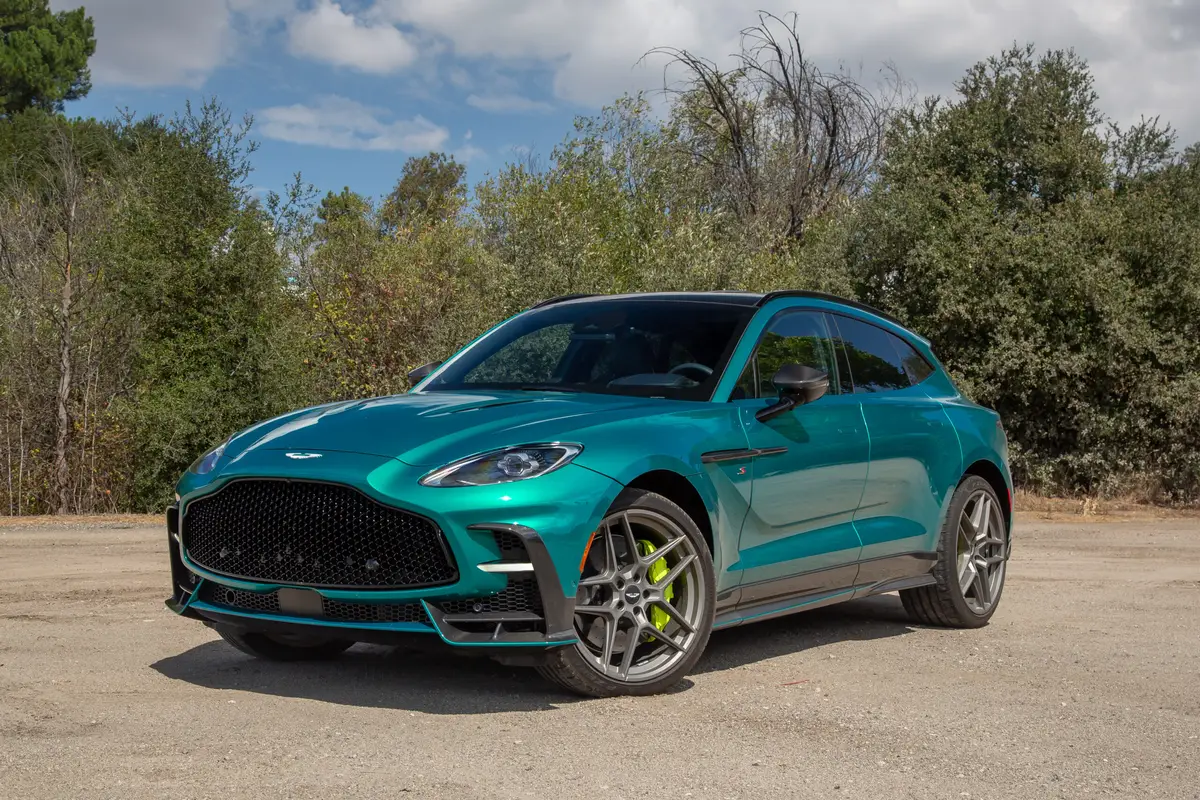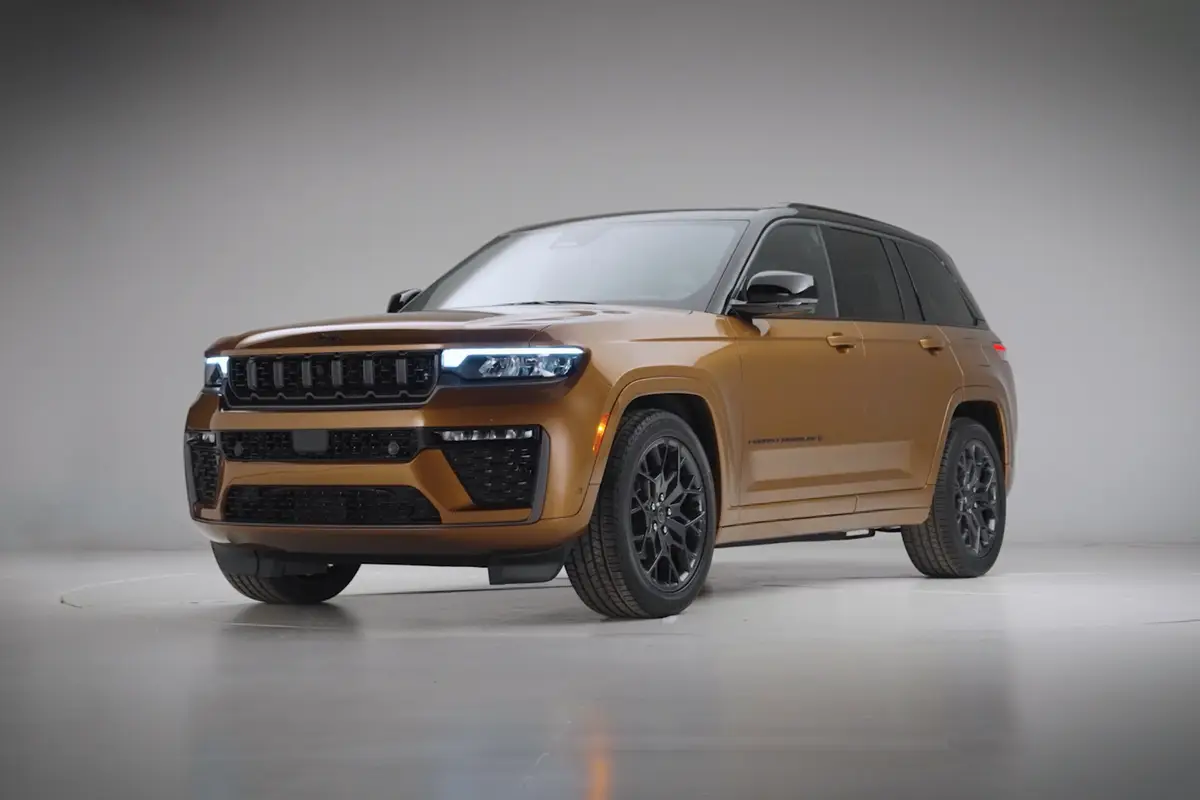Ford's EcoBoost V-6 Gets Ready to Jump into Desert Racing
In less than a week, off-road desert racing could change forever. At the Blue Water Desert Challenge in Arizona, Randy Merritt and the Mongo Racing team plan to become the first team in the Best in the Desert race series to run a gasoline turbocharged six-cylinder Ford EcoBoost engine. It’s a move that’s generating attention — and some controversy.
Until now, BITD racers like Merritt have been allowed to compete only with naturally aspirated V-8 gas engines or turbo diesels under the hoods of their full-size race trucks. But for the new season BITD changed its rulebook to allow the all-new turbo six to compete in stock classes 8000 and 8100.
Classes 8000 and 8100 cover race trucks built from full-size pickups and SUVs with production volumes of more than 4,000 units sold within a three-year period. Class 8000 trucks are the open stock racers. Custom rear suspension components and mount points, engine bores and strokes different from factory specs and any transmission are allowed from the truck’s manufacturer. Class 8100 trucks are closer to the original vehicles’ specs. They have to keep their front and rear suspension configurations and mount points, engine displacement and the original transmission.
The 3.5-liter EcoBoost V-6 is the first application of Ford’s gasoline direct-injection twin-turbo technology in a half-ton pickup. It’s Ford’s effort to shrink engine displacement for improved fuel economy while delivering tons of low-end power. In the 2011 Ford F-150, the 3.5 V-6 is rated a strong 365 horsepower (at 5,000 rpm) and 420 pounds-feet of torque (at 2,500 rpm) with a flat, diesel-like torque curve. Ninety percent of peak power is available from 1,700 rpm to 5,000 rpm.
Ford's all-new EcoBoost V-6 sits in the engine bay of Mongo Racing's new F-150 desert racer. A custom intake system was fabricated by UMP because the upper shock mounts for the Sway-A-Way coil over dampers intruded into the stock intake's space. Note the red trimmed oil reservoirs for the front shocks mounted above the engine.
As with many major technology shifts, the advanced EcoBoost V-6 has stirred strong debate between forward-looking light-duty pickup buyers looking for increased fuel efficiency without sacrificing power and traditional truck buyers who firmly believe a large-displacement V-8 engine is the only choice for towing and hauling.
To try to get ahead of the debate, Ford has created a marketing campaign that seeks to show the EcoBoost V-6 is as durable and tough as a V-8. That includes rig to race in the Baja 1000.
Merritt’s Class 8100 F-150 isn’t the same truck as McCarthy’s Class 8000 Ford half-ton.
While McCarthy’s larger SuperCab truck – formerly known as the Raptor R – has gotten the lion’s share of attention from the media, the Mongo Racing team has been quietly working since May to get its EcoBoost engine ready to power a two-door F-150.
Behind the massive 37-inch General Tire rolling stock and to the right of the coil over shock, you can see one of the EcoBoost V-6's turbos.
As word spread about Merritt’s efforts, the Mongo Racing team has run into the same kind of controversy in the desert racing community that Ford is seeking to head off in the larger community of truck buyers, but for a different reason: A boosted six could threaten the large investments that some have made tuning their naturally aspirated eight-cylinder engines for maximum power.
“There are a lot of people that are excited about it, but then there’s a lot of people that are totally anti [a turbo V-6 truck racing in BITD],” Merritt said. “It’s pretty exciting to do something new like this. Something that nobody else has done before. There are a lot of haters, though. People are scared of technology. A lot of other guys spend $50,000, $60,000 on an engine where now you can get something like this.”
Ford has priced the new EcoBoost $1,750 more than the base 3.7-liter V-6 in the 2011 F-150.
Merritt expects the EcoBoost V-6 to have one major advantage over the 5.4-liter V-8 in his last truck.
“Hopefully [the EcoBoost V-6] has good low-end power,” Merritt said. “The 5.4 that I’m racing now is like a two-stroke. You have to keep it wound up. Once you let off the gas, you have to start over. If you make a mistake going up a wash, you have to start through the gears again, and it takes awhile to get on top of it and keep the power band going. But if this [EcoBoost V-6] is going to have [low-end] torque like that, it’s going to make a big difference going zero to 50 [mph].”
The rear of the Merritt's race truck is close to stock, including using Ford's factory leaf springs.
Merritt started his career in 1993, behind the wheel of a 1979 Ford pickup. After a hard-fought decade competing across many of the toughest trails in the U.S. Southwest and Baja California, Merritt clinched a sponsorship deal with Ford that provided him with a 2004 F-150 and a seat in Ford’s full-size truck engineering feedback team. Merritt went on to become BITD’s stock full-size class champion in 2006. Afterward, Merritt and other Ford-sponsored desert racers helped the Blue Oval’s Special Vehicle Team develop the amazing 2010 Ford F-150 SVT Raptor, the first long-travel suspension off-road pickup available from a major truck manufacturer. In 2008, Merritt drove the Ford Raptor R racetruck to the finish line during the last leg of the grueling SCORE Baja 1000.
It’s taken nearly five months to get Mongo Racing’s EcoBoost F-150 ready for the Blue Water race in Parker, Ariz., even though the team has yet to fire up the EcoBoost engine, Merritt says.
“Test day might be on race day,” Merritt said. “We’ll see how it goes. We’ve been working every single day for months.”
The EcoBoost V-6 isn’t the complicating factor. Merritt says the engine and its 6R80 six-speed automatic transmission are virtually stock except for a fabricated air intake system (made by Unique Metal Products) because the front suspension’s upper shock mounts interfered with the stock intake’s dimensions.
Another unique challenge was protecting the turbos’ intercooler, which is mounted low behind the front bumper and below the transmission. Rock damage or mud blocking the intercooler could damage the turbos, which run at temperatures up to 1,600 degrees. For protection and cooling, Merritt’s team installed a large skid plate with holes for air, a screen to block debris and a fan to increase airflow volume.
A close look at the turbo intercooler with its fan for improved air flow and perforated skid plate.
There haven’t been any changes to the powertrain’s calibrations because the team (and the desert racing aftermarket) hasn’t yet developed the knowledge necessary to tweak it, and Ford’s support since shipping the engine has been minimal.
“[Ford has] been doing a lot of work with Mike McCarthy, and he’s given me feedback,” Merritt said. “They’re ahead because they already had a racetruck that was running. It’s a good thing because if we were all in the same boat, it might be months away. With McCarthy having a jump-start, [it] really helped us a lot.”
The truck’s console-mounted shift lever is the same as you’ll find in a 2011 F-150. It’s not even gated, like Merritt’s old 2004 F-150 racetruck’s shifter, to keep it locked in place while bouncing around the racecourse. The driver will have to shift gears with the gearbox’s manual mode, which allows the driver to shift the automatic transmission up and down like a manual gearbox using +/- buttons mounted on the lever. Most of the race prep has been spent transforming the F-150 into a hardened desert racer.
The transmission in the race truck is completely stock, right down to its non-gated shifter, which has +/- buttons to manually change gears.
Merritt’s team did most of the modifications in their garage, adding bigger bolts for the front and rear shocks, bolstering the rear end, welding on extra braces and brackets and fabricating stamped steel upper and lower A-arms for the front suspension. Tracy Rubio at TNC Machine in Kingman, Ariz., created the truck’s roll cage and bumpers and mounted the giant Sway-A-Way front and rear dampers. After completing that work, Merritt’s team continued working on installing all of the wiring, steering mounting, hoses, fluid reservoirs and radiator.
“The crunch time is the wiring,” said Merritt. “There are no specs to go from. We’re figuring it out ourselves.”
The front suspension uses two sets of dampers on each side of the truck. The primary shocks are Sway-A-Way 3-inch-diameter coil-overs with remote reservoirs, plus separate helper shocks mounted on the upper control arms. The rear shocks are Sway-A-Ways paired with stock Ford leaf springs.
“We have to run leafs in the rear,” Merritt said. “We always run with Ford leafs. Ford steel is the best steel. We add and take away [springs] and shorten some of the springs up to get the right ride height and stiffness.”
There are 11 inches of suspension travel up front and 15 inches at the back wheels. Other changes include installing a UMP power-steering system, KC Hilites for night racing, Mastercraft race seats and replacing Ford’s factory oil in the EcoBoost V-6 with Royal Purple oil.
If Merritt and Mongo Racing’s squad of mechanics can finish in time, this Saturday we’ll see the silver EcoBoost F-150 start the Blue Water Desert Challenge during the second race of the day flying No. 8182. The race consists of three 27-mile laps over two days.
McCarthy and the open stock Ford EcoBoost Baja 1000 F-150 in the same race, starting in the fifth heat of the day on Saturday.
However, both are keeping their eyes firmly on the Baja 1000, where the big fame and attention lies. Interestingly, SCORE, the Baja 1000’s officiating body, still hasn’t officially announced it will accept gasoline turbo stock trucks.
“We’ll do [the Baja 1000] in the new F-150 truck if SCORE allows it to race with turbos,” Merritt said. “The whole purpose of building this truck is to go to Baja, but we haven’t booked our rooms there yet.”
And beyond the Baja 1000?
“I think this is the future,” Merritt said. “With turbos, there are a lot of companies out there. Maybe this will bring more sponsors and money to the sport of off-road racing. It’s time the racing organizations move forward.”

Featured stories


2026 Aston Martin DBX S Review: Excellence in (DB)X S


